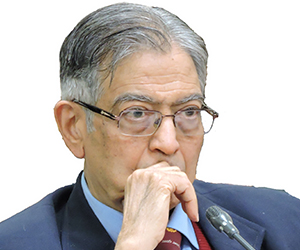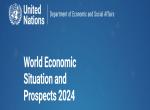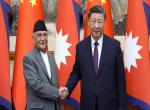The recent Report of the Office of the UN High Commissioner for Human Rights (OHCHR) on the ‘Situation of Human Rights in Kashmir’ is disappointing. It reeks of an anti-Indian bias and is deeply flawed.
This is evident from the title itself which is not mindful of India’s territorial integrity and sovereignty by blithely trifurcating the Indian State of Jammu and Kashmir into so called ‘Azad Jammu and Kashmir’ and Gilgit-Baltistan. The more appropriate title would have been ‘the Indian State of Jammu and Kashmir including areas under Pakistan’s Illegal Occupation’. There is also a strange coyness in the Report, in not squarely terming the Hizb-ul-Mujahidin (HM), Lashkar-e-Taiba (LeT), Jaish-e-Mohammad (JeM), etc. as terrorist outfits even though the international community recognises them as such. Instead, they are addressed as “armed groups” or “militants”. Furthermore, the Report is hesitant in categorically asserting that Pakistan is engaged in the export of terror to India, which after all is at the root of the current turmoil in Jammu and Kashmir. Instead, the Report takes recourse to circumlocutory language to the effect that “experts believe” that ‘the Pakistan military supports the militants in their operations’.
Regrettably, this bias and twisting of facts persists even in reportage of developments relating to Kashmir soon after India’s independence. For instance, the Report suggests that Maharaja Hari Singh chose to remain independent till October 26, 1947, when he signed the Instrument of Accession “under pressure of invading Pashtun forces.” This suggestion obfuscates the reality on two counts. Firstly, the Maharaja had not chosen to remain independent but was merely vacillating about his final decision. Secondly, the Kashmir invasion was masterminded by Pakistan which used Pashtuns from the North West Fontier Province (NWFP) for the purpose along with such other personnel that it could muster. Ultimately, as it revealed later at the UN that it had as many as three brigades in Jammu and Kashmir.
Obfuscation of the fact of Pakistani aggression is a major flaw as that fact was accepted by the United Nations Commission for India and Pakistan (UNCIP) Resolutions of August 1948 and January 1949 which called for vacation of aggression by Pakistan. But that flaw is in tune with the tenor of the Report which goes on to equate India with Pakistan in the Kargil War and fails to point out that it was Pakistan that triggered the conflict.
In dwelling upon the aforesaid UNCIP Resolutions which had been accepted by both India and Pakistan, the Report should have elaborated on the fact that these Resolutions had three elements. First, calling for a ceasefire; second, calling for vacation of Pakistani aggression; and third, calling for determination of the will of the people contingent on fulfilment of the first two elements. Since Pakistan never vacated the aggression there was no possibility of fulfilling the third element. It may further be pointed out that the Report, in tracing the background of the developments relating to Kashmir, conveniently excludes mention of the fact that in discussions on this issue, the UNCIP had held out the following assurances to India:-
1. Responsibility for the security of Jammu and Kashmir rests with India.
2. The sovereignty of Jammu and Kashmir over the entire territory of the State shall not be brought into question.
3. Plebiscite proposals shall not be binding on India if Pakistan does not implement Part I and Part II of the resolution of August 13, 1948.
4. There shall be no recognition of the so called ‘Azad Kashmir’ government.
5. The territory occupied by Pakistan shall not be consolidated.
6. Reversion of administration of the evacuated areas in the North to the Jammu and Kashmir Government and its defence to the Government of India.
7. So called ‘Azad Kashmir’ forces shall be disbanded and disarmed.
8. Exclusion of Pakistan from all affairs of Jammu and Kashmir. Plebiscite Commissioner would be appointed by India and administration would be provided by India.
The call in the Report that India should “fully respect the right of self-determination of the people of Kashmir” is totally unwarranted as the same has already been exercised. Though India could not hold a plebiscite in Jammu and Kashmir, as explained earlier, due to Pakistan’s failure to vacate aggression as required by the UN resolutions, it was quite clear that the accession of Jammu and Kashmir should not only be legally valid through the Instrument of Accession signed by the Maharaja but it must also be backed by popular will. Such popular will was reflected in the ratification of the Instrument of Accession in 1954 by a duly elected Constituent Assembly of Jammu and Kashmir following three years of debate. Indeed, the Constituent Assembly went beyond that and in 1956 it gave Jammu and Kashmir its own Constitution which, inter alia, recognised that the State was an integral part of India. Apart from these actions which gave the seal of popular approval to the accession of Jammu and Kashmir to India, genuine and meaningful democracy has been in play in that State for decades and its people regularly elect their representatives both at the provincial and national level.
The Report clearly errs in suggesting that the situation in 2016-2018 in terms of violence, protests etc. was at an all time high in Jammu and Kashmir. This is factually incorrect. According to the South Asian Terrorism Portal, the civilian fatalities in 2016, at 14, were the lowest ever since 1988. In the period 2016 to 10 June 2018, they were a total of just 107 fatalities as against over 1000 annually from 1993 to 1996, and a total of 14831 fatalities during the period 1988 to 10 June 2018.
Implicit in the Report is the thought that civilians were deliberately targeted by the security forces. This is a complete travesty of facts. Civilian casualties are, in the main, the result of either deliberate targeting by terrorists, or they being caught in crossfire, or themselves attacking the security forces. The Indian Army, when it comes out in aid of civil authority, is trained to use minimal force and has perhaps the best record in the matter internationally. This is apparent from the fact that while in most other countries, including in our immediate neighbourhood, most armed forces have no qualms in using heavy weapons, tanks and even air power in dealing with insurgencies, the Indian Army makes do with small arms. This is also reflected in the comparatively large number of fatalities suffered by our security personnel. In the period 1988 to 10 June 2018, as many as 6391 security personnel were killed as against 23444 terrorists. With the declining level of insurgency from 2016 to 10 June 2018, the corresponding figures fell to 205 and 788 respectively.
The deeply flawed nature of the Report stems in part from the anti-Indian bias of the author and in part from its methodology of “remote monitoring”, based upon the selective use of relatively limited data, no on the spot visits, and little or no interaction with all the players involved. In this backdrop, the Report is unlikely to command much respect and enjoy any considerable traction.
(The author is a former Deputy National Security Advisor)
(The paper does not necessarily represent the organisational stance. The author certifies that the article/paper is original in content, unpublished and it has not been submitted for publication/web upload elsewhere, and that the facts and figures quoted are duly referenced, as needed, and are believed to be correct).
(The paper does not necessarily represent the organisational stance... More >>
Image Source: https://en.wikipedia.org/wiki/International_Criminal_Court_investigation_in_Kenya











Post new comment